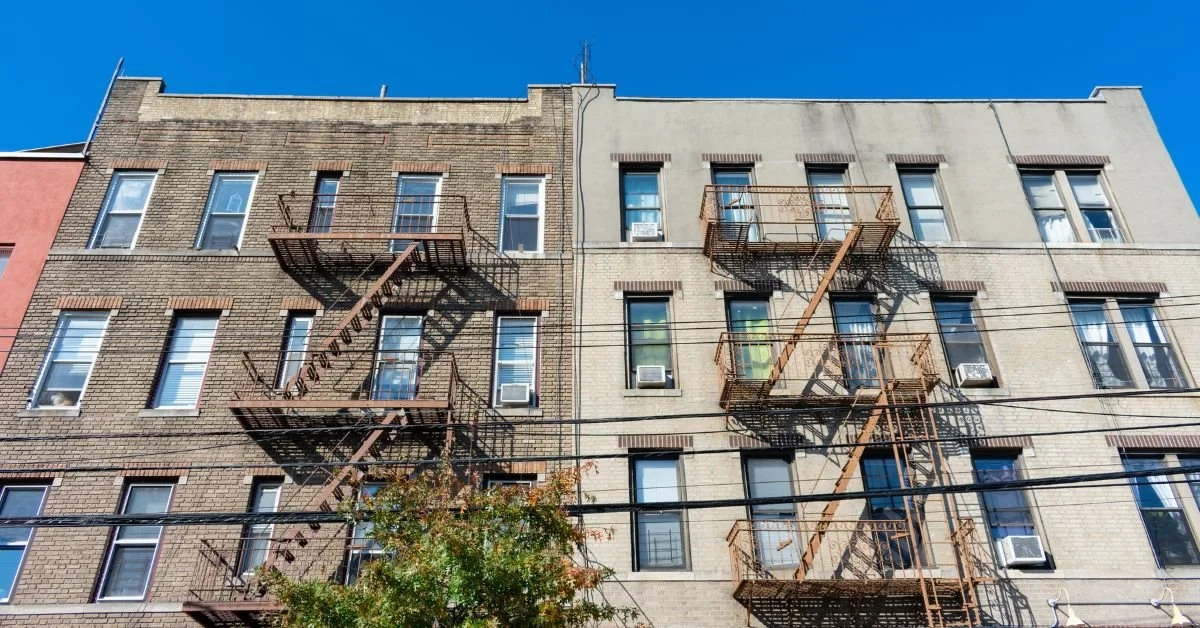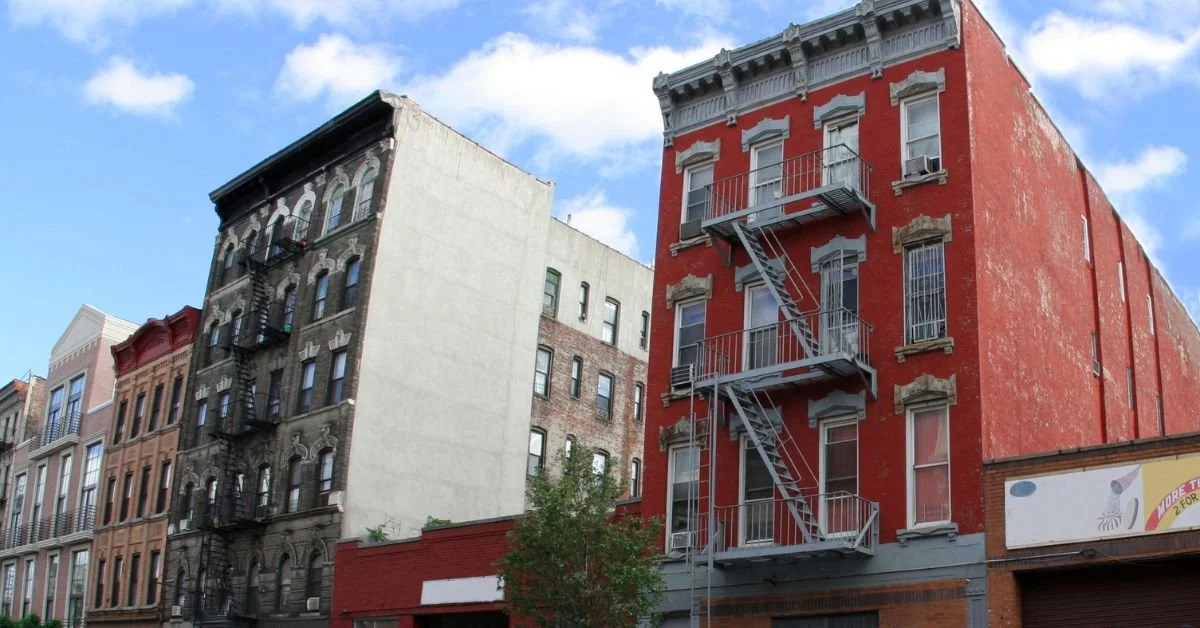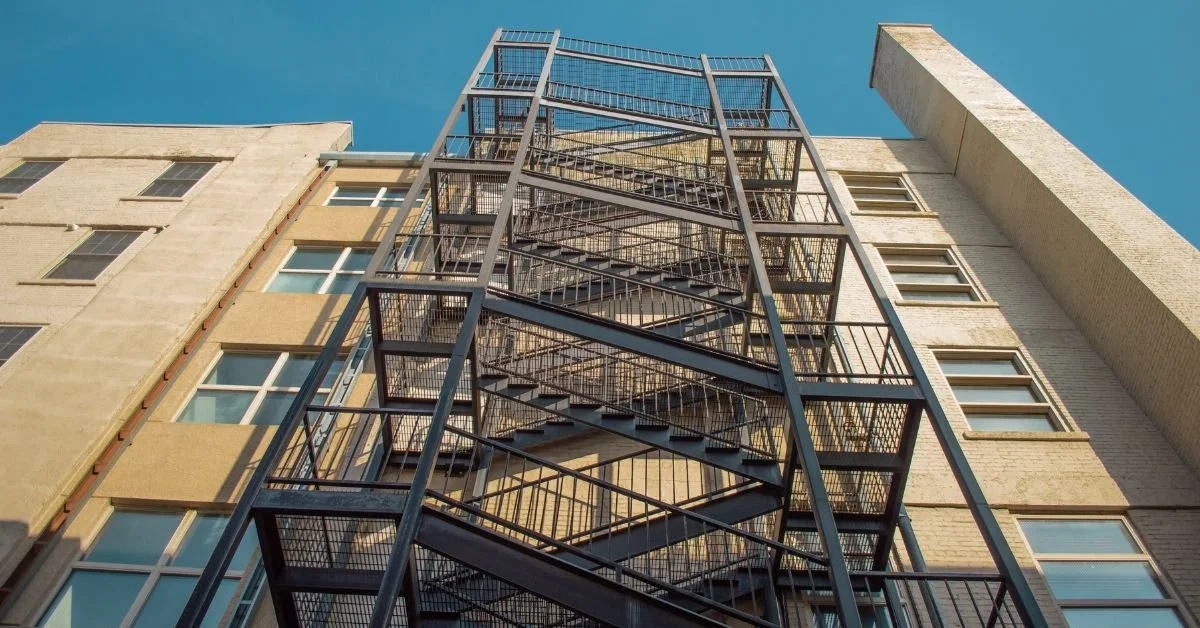NYC Fire Escape Standards for Buildings Under 7 Stories
Fire escapes are critical safety measures in urban environments like New York City, where dense building layouts can affect evacuation routes during an emergency. Specialized rules and regulations dictate the construction, maintenance, and use of buildings under seven stories.
Building owners and managers, take a closer look at these NYC fire escape standards for buildings under seven stories. These regulations can help you provide safe options for tenants and occupants during unforeseen events.
Fire Escape Regulations in New York City
New York City fire escape regulations for buildings under seven stories originate from a combination of state fire codes, municipal laws, and historical building standards. The presence of fire escapes in the city’s architecture reflects decades of safety planning. Buildings constructed before modern fire codes often used external metal staircases to satisfy egress requirements, especially in walk-up apartments and smaller commercial buildings.
The New York City Housing Maintenance Code (HMC) plays a key role in the construction of buildings under seven stories. Fire escapes on such properties require clear, unobstructed paths for occupants to safely exit.
Regulatory codes specify adequate width, height clearance, and stability to ensure functionality during emergencies. Each escape must connect to all floors above ground level and provide direct access to the ground or a secondary point of safety.
Structural Integrity
Material integrity remains a priority under these standards. Fire escapes must use corrosion-resistant materials and undergo regular inspections to prevent degradation.
Rust, improper fastenings, or loose bolts can compromise escape reliability, potentially endangering lives. Additionally, property owners must maintain visible signage identifying fire escape access points and ensuring their proper use in emergencies.
Requirements for Upgrades and Design
Property owners planning to upgrade fire escapes for New York City buildings under seven stories should verify design criteria before beginning their project. Fire escapes must align with the building’s structure while adhering to size, space, and stability standards outlined in codes.
Fire escape ladders play an essential role in these setups. Retractable ladders remain a common choice for preventing unauthorized access, but must operate easily during emergencies. Foldable staircases and sliding ladders also comply with regulations if they provide seamless downward access.
Property owners must also ensure that window openings leading to fire escapes meet particular dimensions. Small or obstructed windows can hinder escape routes, so compliant designs mandate clear, accessible pathways. Furthermore, designers must ensure flame-resistant coatings on fire escapes, reinforcing their functionality under direct heat exposure.
Upkeep and Annual Inspections
Proper maintenance of fire escapes falls under the ongoing responsibilities of property owners and landlords. Local laws require annual inspections performed by qualified professionals to assess structural integrity and safety functionality.
Inspectors evaluate rust, corrosion, and hinge operation. Unsatisfactory conditions may lead to fines and penalties if property owners delay corrective measures.
Routine maintenance includes repainting fire escapes with weather-resistant coatings, removing debris, and checking connections to the building itself. Ice, dirt, fallen branches, or other obstructions can quickly render fire escapes impractical when not regularly addressed.
How Fire Escape Compliance Can Vary
Regulations in New York City reflect the increasing modernization of the city’s infrastructure. Still, recognize that NYC fire escape standards for buildings under seven stories may differ across boroughs.
For instance, Staten Island often sees newer housing developments without exterior fire escapes due to more recent construction codes. Conversely, historic neighborhoods in Brooklyn, Manhattan, and Queens maintain significant reliance on traditional external escapes.
Local variances within New York City illustrate the importance of understanding building-specific requirements. These distinctions mean compliance depends largely on the property’s age, location, and prior renovations. Professional fire escape consulting ensures compliance across all applicable jurisdictions while addressing these nuances.
Updating or replacing outdated fire escapes remains essential for property owners to maintain compliance. Non-compliant structures may lead to legal liabilities, delays during inspections, and health or safety hazards for residents. Ensuring alignment with these standards requires diligent record-keeping and a commitment to detail-oriented upgrades.
Trust Fire Escape Experts for Compliance Solutions
Given the detailed requirements behind fire escape installation, inspection, and maintenance, property owners often need specialized assistance. Professionals in the fire escape industry offer essential services that simplify regulatory compliance and long-term upkeep.
Experts in fire escape replacement, installation, repair, and inspection, such as Maximum Fire Escapes, provide fire escape maintenance that allows these structures to meet precise legal standards. Our team members are experts who remain updated on existing and changing safety requirements in New York, New Jersey, and Pennsylvania. With such knowledge and our expertise with steel structures, we provide comprehensive inspection services and top-quality construction that enhance utility and safety.
Collaborating with us guarantees adherence to shifting codes and extends the lifespan of the structure. You foster safer living conditions for tenants and stakeholders while navigating the complexities of regulatory standards when you invest in these services.
The Importance of Maintaining Accessibility
Accessibility guidelines apply directly to fire escape paths and related enclosures. Property owners must check internal exit paths, such as hallways and stairwells, to confirm their usability during emergencies. Locked doors, cluttered spaces, faulty lighting systems, and other obstacles can reduce the effectiveness of fire escape routes.
Window gates or security bars add additional challenges unless they comply with quick-release systems. While these features provide added security, local fire codes dictate that they should not obstruct fire escape routes. Adhering to these guidelines minimizes risks during evacuation and optimizes escape efficiency.
Navigate Updates to NYC Fire Codes
The city constantly evaluates its fire safety laws to reflect lessons learned from past events and keep up with ongoing advancements in safety technology. Property owners must stay updated on revision announcements. Recent updates highlight building requirements for energy-efficient coatings on outdoor structures, addressing environmental concerns while retaining fire resilience.
Additionally, enforcement agencies may expand inspection protocols in older neighborhoods, where historic buildings remain prevalent. Aging fire escapes often require modifications or replacement services, as minor repairs cannot address core structural failures.
Collaboration with city-recommended agencies ensures timely updates regarding these regulations. This fosters smoother inspection schedules and eliminates last-minute compliance hurdles.
Move Forward in Fire Escape Safety
Leading with diligence and preparation allows NYC property owners to meet the demands of fire safety standards effectively. Fire escapes for buildings under seven stories adhere to unique codes that preserve historical designs and follow modern safety advancements. Owners must prioritize installations that comply entirely with city regulations while maintaining ongoing inspections and refurbishments.
Engaging professional expertise ensures compliance with New York City’s fire codes while simplifying the complexities of design and upkeep. Investment in quality escape solutions reinforces adherence to municipal standards and ultimately supports occupant safety through accessible, durable, and well-maintained evacuation options.



